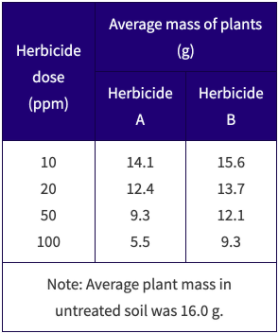Ease Into Prep with an ACT® Question of the Day
Build prep into your routine until it's second nature.
Get an ACT question—with detailed answer explanations—in your inbox every day.
Build prep into your routine until it's second nature.
Get an ACT question—with detailed answer explanations—in your inbox every day.
Herbicides are used to control the growth of weeds. An herbicide that may be used safely with one crop species may damage another crop if the latter crop is planted in soil containing residual amounts of the herbicide from an earlier application. The following experiment was performed to study this effect:
A botanist filled 90 pots with Soil Type 1. No herbicide was added to the soil in 10 pots. The other pots were divided into groups of 10 and the soil in each group was treated with 10, 20, 50, or 100 ppm of either Herbicide A or B. All other factors were held constant. Ten seeds of a corn hybrid were planted in each pot. After 40 days, the plants were uprooted, oven-dried, and weighed. The results are shown in the following table:

Which of the following sets of plants served as the control in the experiment?
No matter where you are on your journey, Kaplan's expert teachers can help you raise your score.
Find the course that fits you best.